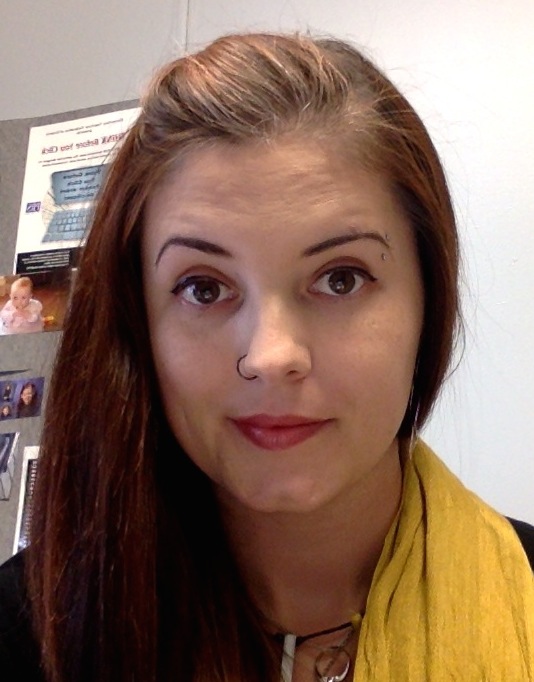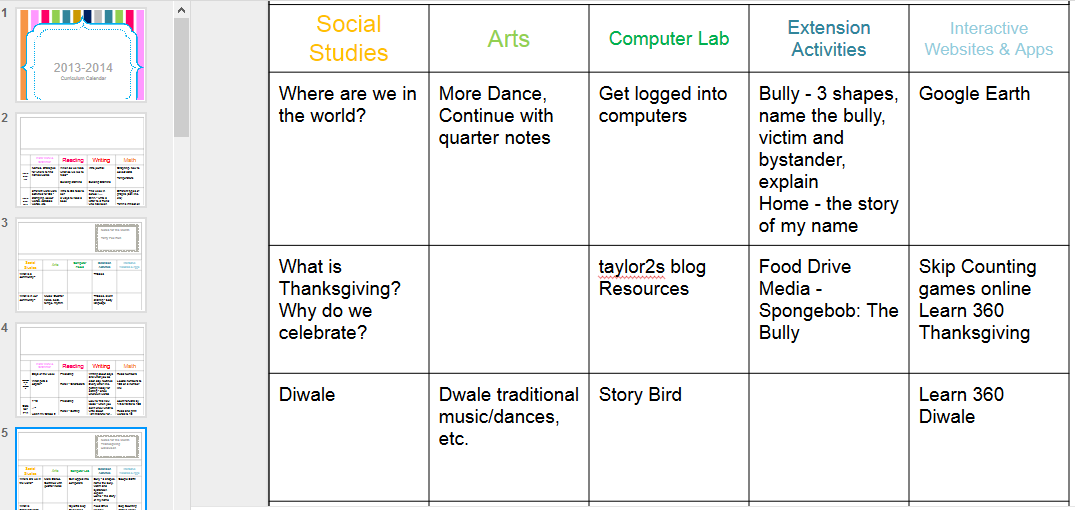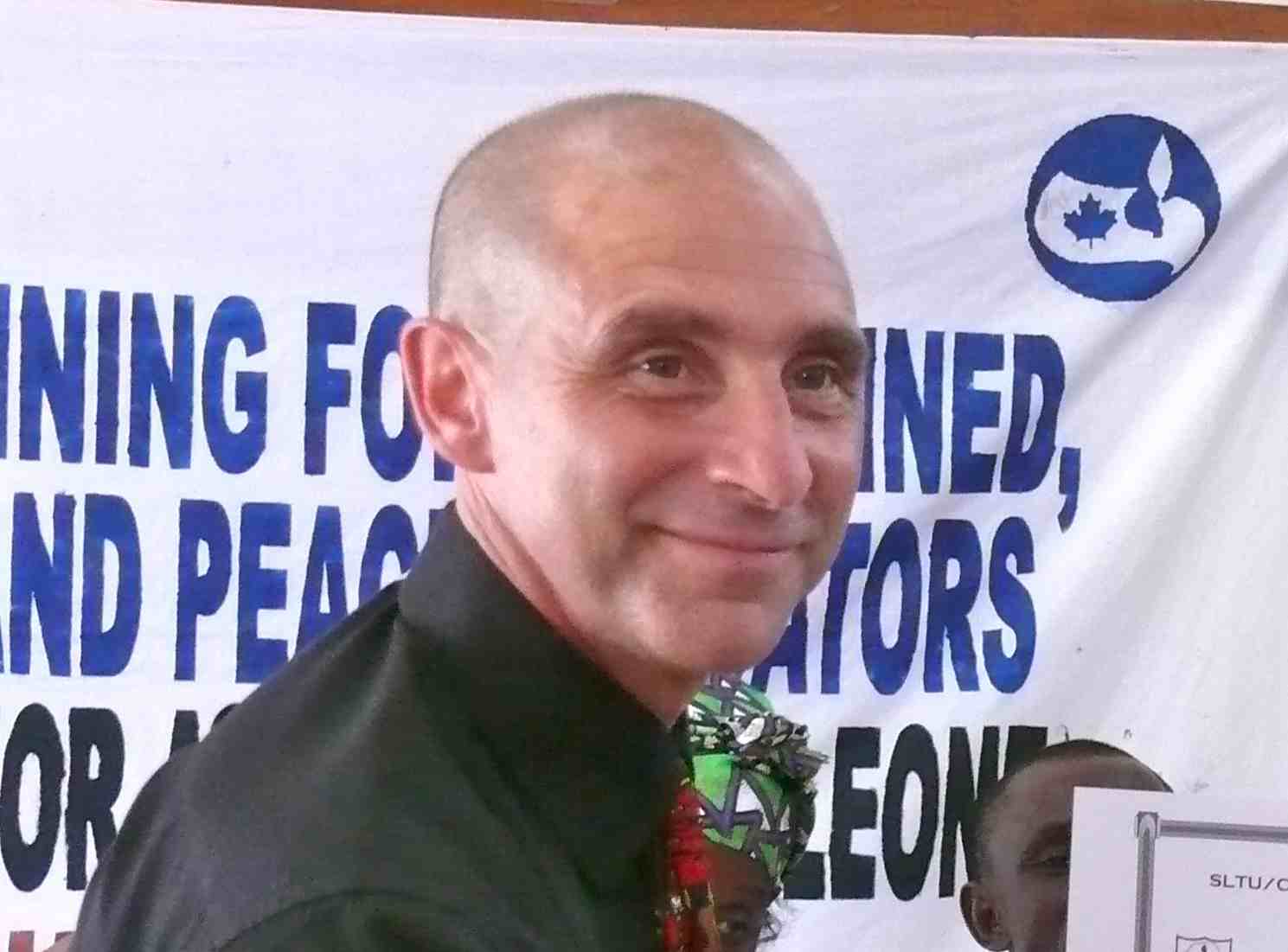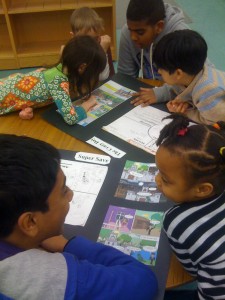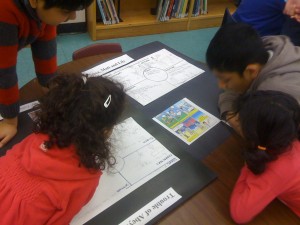With all the plans we make for those first days and weeks in September, it is worth being open to making adjustments, for your benefit and the benefit of the students. Here are some examples of how I have adjusted the environment and the program in the first few weeks:
- I have changed the layout twice. We were pleased to get 6 rectangular tables and 1 round table in the second week, but have rearranged them twice to suit the needs of the students. This means that there are two sets of tables put together seating groups of up to 12 students who like to work together, and one table seats only 4 students who require more personal space. I planned for an even distribution of students per table, but am responsive to their different requests regarding space and collaboration.
- The area carpet was originally placed in one corner of the room for community discussions and knowledge building sessions. The students enjoyed these talks, but found it hard to get close when we are limited with only two accessible sides to the carpet for rows of chairs behind those who are seated on the carpet. So, I moved the carpet to the centre of the room and it connects to the small carpet area of our class library. Now there is less movement of chairs as students turn to the centre of the room for discussions and use the extended space of the class library to sit.
- We took a Multiple Intelligence survey to get to know our own learning strengths and the strengths of all the students in the class. We continue to consider these and reflect on them by referring to graph compiled in the class to remind us.
- I finally typed out my schedule last Thursday. It took me that long to juggle our literacy block and periods for Science and Social Studies with withdrawal for ESL and special education support. I have added 15 minutes of literacy to the end of our day when we review our agendas with a poetry cafe allowing dedicated time for the reading, sharing, and writing of poetry.
- We introduced “Minutes for Mindfulness” each afternoon. After lunch and a transition for French class, some of the students had difficulty settling for a full-class discussion regarding our inquiry topic. I asked if they wanted to try some mindfulness techniques, and a new student shared a website/app called www.calm.com that his teacher used last year. This adjustment not only helps the students, but I benefit from the 2 minute relaxation exercises as well!


